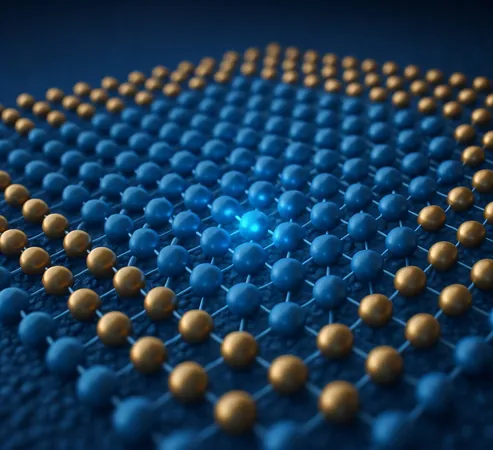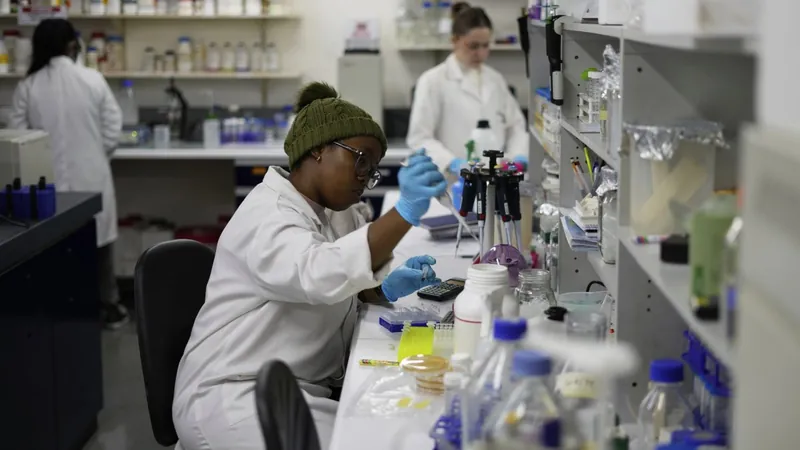
Revolutionary Discovery: How Scientists Can Turn Off Superconductivity with Electric Fields!
2025-06-05
Author: Ming
Unlocking the Secrets of Superconductivity
In a groundbreaking development, physicists have unveiled how an electric field can effectively switch off superconductivity in ultrathin metallic films, a finding that could revolutionize future electronics and quantum computing. Superconductors, known for their ability to carry current without resistance when cooled below a critical temperature, are considered the holy grail of modern technology.
The Role of Electric Fields in Superconductivity
Traditionally, superconductors operate through the formation of Cooper pairs—pairs of electrons that move in unison, allowing for the flow of electricity without any energy loss. However, recent studies have shown that applying a sufficiently strong static electric field to these films can ingeniously suppress this superconducting current. But until now, the exact mechanism behind this suppression was shrouded in mystery.
The Researchers Behind the Discovery
A team of theoretical physicists, including Giovanni Ummarino, Alessandro Braggio, and experimentalist Francesco Giazotto, embarked on a mission to crack this code. Their rigorous study combined advanced computational models and theoretical insights to explore how and why the electric field disrupts these vital Cooper pairs.
Key Findings: Thin Films and Electric Field Penetration
The researchers discovered that the electric field must penetrate the metallic film significantly—specifically, the field's penetration depth should be on par with the film's thickness. For instance, niobium nitride films, often used in these experiments, show a penetration depth of 4-5 nanometers, which matches the film thickness of 10 to 30 nanometers. This condition ensures that a non-zero electric field remains inside the film, allowing electrons to tunnel out of their Cooper pairs.
Quantifying the Breakthrough: One Hundred Million Volts!
With the help of sophisticated computational techniques, including the esteemed Eliashberg theory, the team successfully quantified the necessary electric field strength to disrupt superconductivity. Their findings show that an electric field of about one hundred million volts per meter is needed to achieve this, a figure that aligns perfectly with experimental data.
Implications for the Future of Electronics and Quantum Computing
This astonishing discovery not only shines a light on the principles of superconductivity but also paves the way for the development of next-generation superconducting microelectronics and quantum gates. As we stand on the brink of a new technological era, this knowledge could unlock countless applications and innovations.
Inspiration Behind the Research
The study has been published in the journal *Physical Review B* and marks a significant milestone in our understanding of superconductivity. The lead researcher, Alessio Zaccone, has an illustrious background in theoretical physics and is eager to explore the vast potentials this discovery may unleash.




 Brasil (PT)
Brasil (PT)
 Canada (EN)
Canada (EN)
 Chile (ES)
Chile (ES)
 Česko (CS)
Česko (CS)
 대한민국 (KO)
대한민국 (KO)
 España (ES)
España (ES)
 France (FR)
France (FR)
 Hong Kong (EN)
Hong Kong (EN)
 Italia (IT)
Italia (IT)
 日本 (JA)
日本 (JA)
 Magyarország (HU)
Magyarország (HU)
 Norge (NO)
Norge (NO)
 Polska (PL)
Polska (PL)
 Schweiz (DE)
Schweiz (DE)
 Singapore (EN)
Singapore (EN)
 Sverige (SV)
Sverige (SV)
 Suomi (FI)
Suomi (FI)
 Türkiye (TR)
Türkiye (TR)
 الإمارات العربية المتحدة (AR)
الإمارات العربية المتحدة (AR)